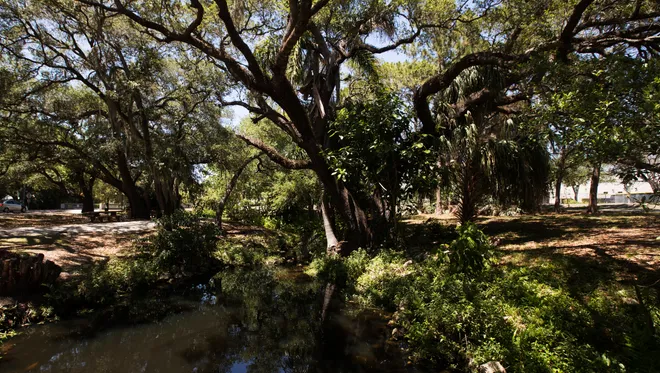Ordered by Florida to clean up its act, Fort Myers works to fix its water pollution problem
Originally published in the Fort Myers News-Press by Amy Bennett Williams on July 21, 2024
With swelling demand straining its antique wastewater infrastructure, it’s no wonder Fort Myers has water pollution problems.
Fecal bacteria in its creeks, fountains “of raw sewage”, dirty construction runoff and dangerous spills have plagued the city for years.
It can be a big problem. Beyond the ick factor, the bacteria “can be an indication of fecal pollution, which may come from stormwater runoff, pets and wildlife, and human sewage,” according to the state health department. “If they are present in high concentrations in recreational waters and are ingested while swimming or enter the skin through a cut or sore, they may cause human disease, infections or rashes.”
After a series of high- and low-profile troubles ranging from what was likely the biggest sewage spill in Fort Myers history, the chronic problems got the city in trouble with Florida’s Department of Environmental Protection. The agency said the city had “not addressed (flows) of untreated human waste, which poses a risk to human health.” In 2021, the two negotiated a consent agreement requiring $768,000 in fixes instead of a $500,000 fine.
Since then, the city says it has worked hard to upgrade pollution control measures.
Fort Myers City Councilman Liston Bochette, whose Ward 4 includes Manuel’s Branch, supports the anti-pollution measures, and is glad the city has focused on deep infrastructure fixes rather than simply paying the fine or doing short-term patch-ups.
“We have done a good job so far but, still have a ways to go,” he wrote in an email. “It is wise to have a long-range plan rather than a quick fix as done in the past. Water is the life blood of South Florida … (I) totally support the water initiatives but wanted the State to not hold a $500,000 punishment over the citizens when it wasn’t their fault.”
The city could do better, says nonprofit Calusa Waterkeeper. As a case in point, the prominent environmental nonprofit cites Manuel’s Branch, a creek named for city father Manuel Gonzalez that winds through many high-end backyards as it makes its way to the Caloosahatchee.
Despite the city’s attention to the waterway, there’s been “no real change or improvement” in fecal bacteria levels, Waterkeeper Codty Pierce says. That it’s been a consistent bacterial hot spot for years is troubling, says Waterkeeper board secretary Jason Pim.
“The existence of these indicator bacteria tells us there’s a high chance of there being a number of bacteria, viruses and other pathogens that create a health risk to humans and our pets,” Pim said.
Clearing homeless camps, digging wells, replacing pipes
Working to change that perception as well as they way Fort Myers handles pollution is Justin Mahon, the city’s environmental compliance manager, whose job is one of many post-consent order improvements, he says. Others include:
- Tying the city’s south wastewater treatment system into Cape Coral’s reclaimed water plant, which sends treated effluent to the Cape rather than into the Caloosahatchee. “By the end of this month we’ll be able to send 12 million gallons per day to the Cape,” Mahon said.
- Starting a deep injection well at the central wastewater treatment plant, which will shoot treated effluent “into the boulder zone, which is a double-confined later of the aquifer well below us.” The project should be finished in 2025; the city is planning three more wells: two at each plant.
- Replacing sewer mains and old clay pipes with new, longer-lived PVC which “adds resilience to the system,” says Mahon, and helps “make sure nothing’s leaking,”
Original Story

























